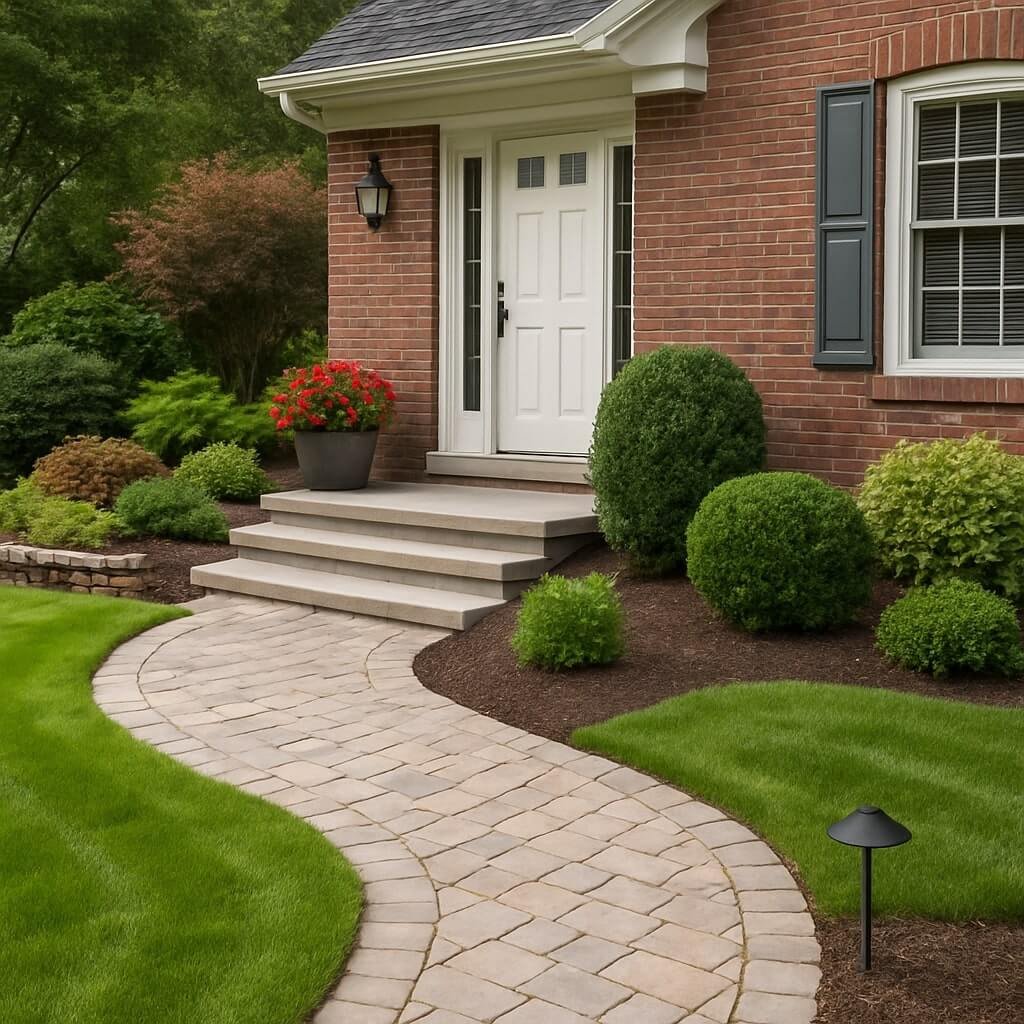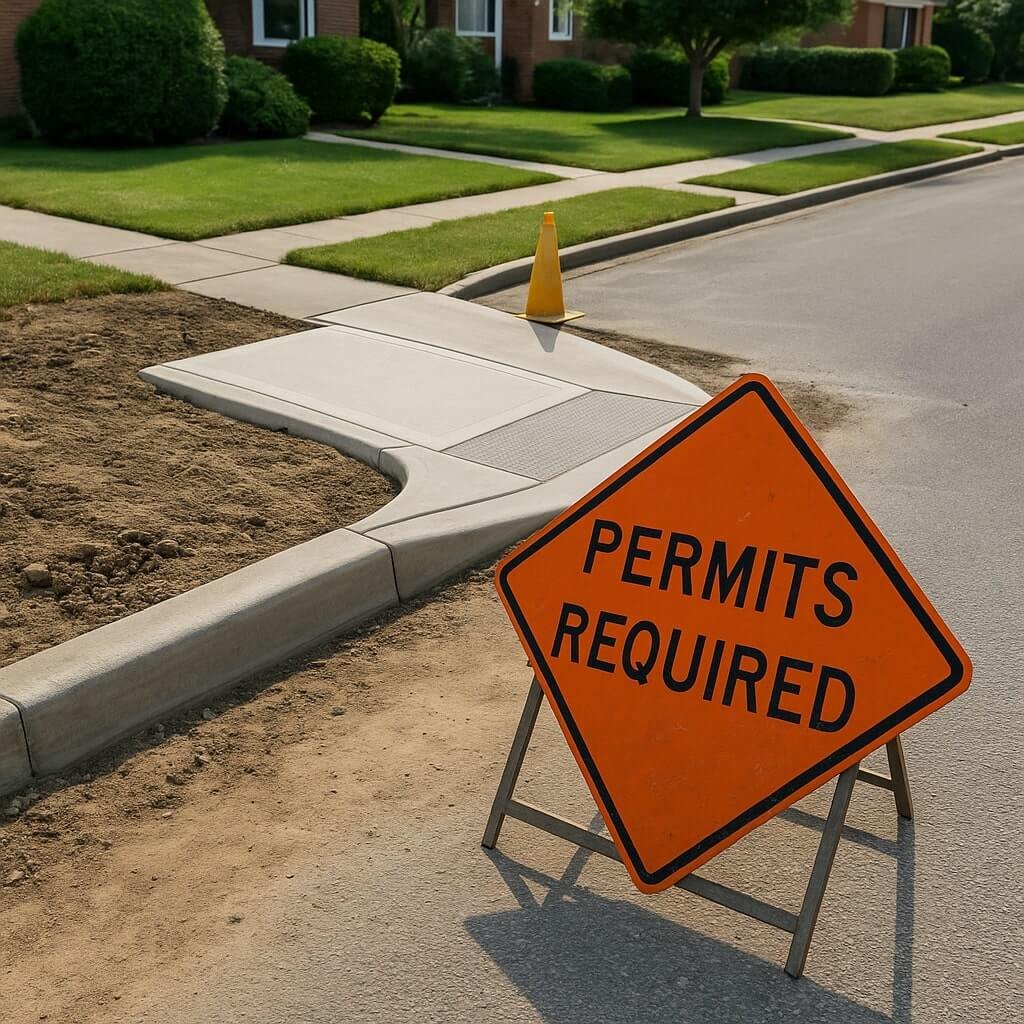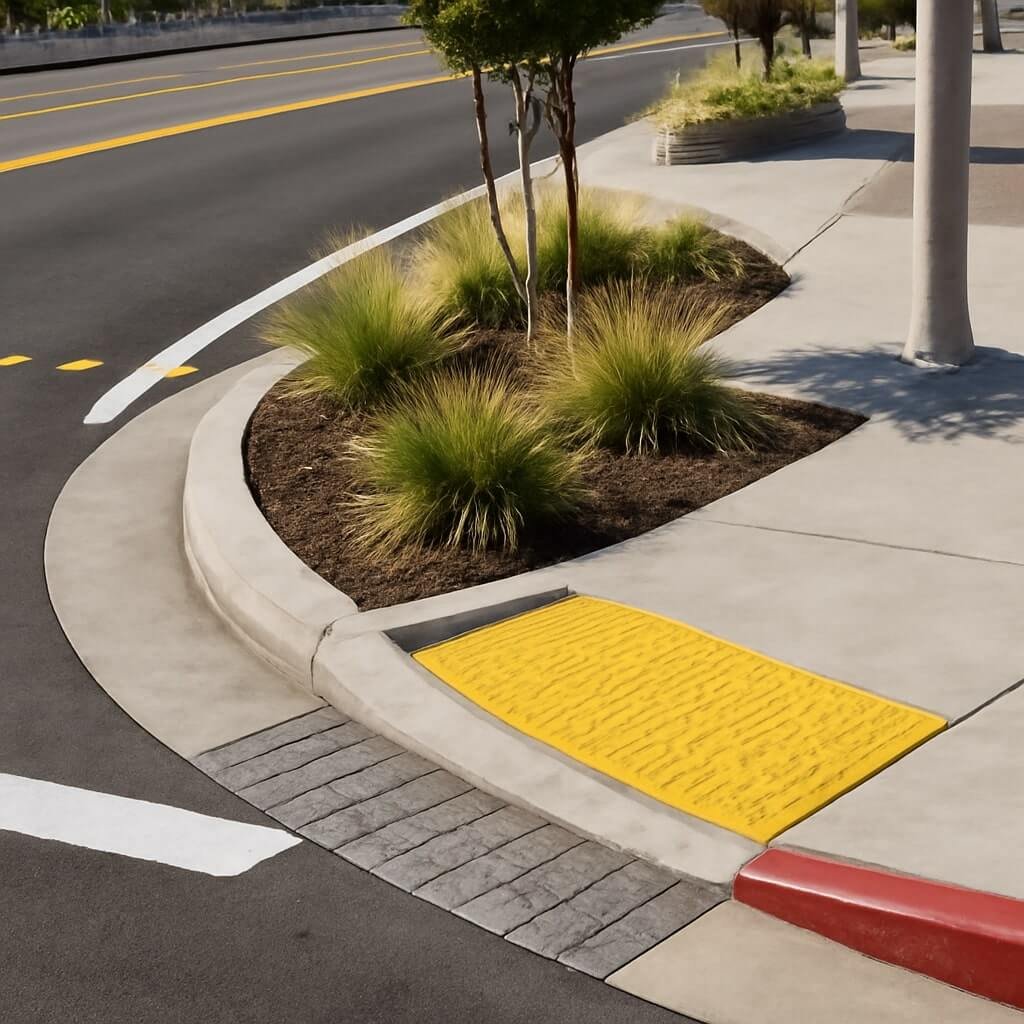First impressions aren’t just for people—they matter for properties, too. Curb appeal sets the tone for what visitors or potential buyers expect from the rest of your home. According to the National Association of Realtors, well-maintained landscaping and exterior features can increase property value by up to 20%. More importantly, maintaining these improvements over time ensures that your home retains its value and aesthetic appeal.
Common Types of Curb Improvements
You’ve probably invested in one or more of the following:
- Landscaping: Grass, shrubs, flower beds, and trees
- Walkways and Driveways: Concrete, pavers, stone
- Lighting Fixtures: Path lights, porch lights, accent lighting
- Fencing and Gates: Wood, metal, vinyl
- Paint and Siding: Trim, shutters, front door
- Porches and Steps: Brick, wood, composite materials
Each of these has specific maintenance needs to preserve its appearance and function over time.
Factors That Reduce Curb Improvement Lifespan
Before diving into solutions, it’s essential to understand what causes wear and tear:
- Harsh weather: Rain, snow, UV rays, and humidity
- Poor installation: Cutting corners can lead to long-term issues
- Lack of maintenance: Ignoring small problems can escalate quickly
- Inadequate drainage: Water pooling can cause major damage
- Pests: Termites, ants, or rodents can wreak havoc
Identifying and mitigating these risks is the first step in preserving your curb improvements.
Importance of Maintenance Planning
Think of your curb improvements like a car—they need regular checkups. Creating a seasonal maintenance plan ensures everything stays in top shape. This plan should include:
- Cleaning schedules
- Inspection checklists
- Touch-up painting or sealing routines
- Lawn and garden care rotations
With a proactive approach, you can significantly extend the life of your curb upgrades.
1. Use Weather-Resistant Materials
Start smart. The materials you choose can make or break the longevity of your curb appeal. For example:
| Material | Climate Suitability | Estimated Lifespan |
|---|---|---|
| Composite decking | All-weather | 25–30 years |
| Concrete pavers | Moderate to dry | 20–25 years |
| Treated wood | Dry or temperate | 15–20 years |
| Natural stone | Cold and wet | 30–50 years |
Choose materials with built-in UV protection, freeze-thaw resistance, or moisture-repellent properties based on your region.
2. Install Proper Drainage Systems
Water is the silent destroyer of exterior surfaces. Without proper drainage:
- Concrete cracks
- Wood warps and rots
- Plants become overwatered or washed out
Install French drains, rain gardens, or sloped walkways to guide water away. Use gravel under hardscapes to prevent water accumulation.
3. Seal Concrete and Pavers Regularly
Sealing concrete walkways and driveways protects them from water intrusion, freeze damage, and staining. Depending on your climate and traffic levels, seal every 2–3 years.
Steps to seal:
- Power wash the surface
- Let it dry completely
- Apply a penetrating or film-forming sealant
- Avoid traffic for 24–48 hours
4. Maintain Your Lawn and Greenery
Healthy, green landscaping is a cornerstone of curb appeal—but only if it’s well-maintained. Overgrown shrubs, patchy grass, and dead plants send the wrong message.
Tips to keep greenery fresh year-round:
- Mow and edge weekly during the growing season.
- Aerate and fertilize your lawn twice a year (spring and fall).
- Trim bushes and trees to prevent obstruction and overgrowth.
- Mulch flower beds annually to retain moisture and suppress weeds.
- Use drip irrigation for efficient, deep watering.
This ongoing care will extend the lifespan of your lawn investment and prevent root rot, fungus, or pest infestations.
5. Clean Surfaces Consistently
Accumulated dirt, leaves, and grime can cause premature wear and discoloration of all your exterior improvements.
Here’s a quick guide:
| Surface | Cleaning Method | Frequency |
|---|---|---|
| Driveways & walkways | Pressure washing | 1–2 times/year |
| Vinyl siding | Mild soap + soft brush | Spring & Fall |
| Outdoor furniture | Wipe down, hose rinse | Monthly |
| Windows & trims | Glass cleaner & sponge | Quarterly |
Don’t underestimate the power of a clean facade—it instantly enhances appearance and reduces surface deterioration.
6. Repaint or Refinish Surfaces
Paint isn’t just for aesthetics—it acts as a protective barrier. Over time, paint and finishes degrade, exposing surfaces to moisture, sun, and pests.
When to repaint:
- Wood fences: Every 3–5 years
- Trim and doors: Every 5–7 years
- Metal railings: Every 3–4 years with rustproof paint
Opt for UV-resistant, weatherproof exterior paints and always apply a primer for maximum adhesion.
7. Prevent Pest Infestation
Termites, ants, rodents, and other critters can chew, tunnel, or nest in your landscaping and structures.
Pest prevention checklist:
- Seal cracks in siding, trims, or foundation
- Avoid stacking wood close to your home
- Install screens over vents and gutters
- Use natural repellents or hire pest control for seasonal treatments
Protecting your curb elements from pests helps preserve both their function and form.
8. Invest in Smart Outdoor Lighting
Lighting adds safety, visibility, and ambiance—but also requires thoughtful planning to last.
Choose LED or solar-powered options for energy efficiency. Use timers or motion sensors to extend bulb lifespan and reduce wear.
Types of lighting to consider:
- Path lights for walkways
- Spotlights for trees or architecture
- Wall sconces near entryways
- Under-rail or stair lighting for porches
Check and replace fixtures or wiring every few years to prevent corrosion or electrical faults.
9. Schedule Seasonal Inspections
Even the best materials degrade over time. Regular inspections catch small issues before they become expensive repairs.
DIY Checklist:
- Look for cracks in concrete or pavers
- Inspect fences for rot or leaning posts
- Check lighting connections and bulbs
- Ensure proper water drainage
Hire professionals every 2–3 years for more thorough evaluations, especially for hardscaping or irrigation systems.
10. Use Sustainable and Low-Maintenance Plants
Not all plants are created equal. Choosing native, drought-tolerant species ensures long-term curb appeal with minimal upkeep.
Examples:
| Region | Low-Maintenance Plants |
|---|---|
| Southwest US | Lavender, yucca, agave |
| Southeast US | Boxwood, juniper, liriope |
| Midwest US | Coneflower, black-eyed Susan, hosta |
| Northeast US | Ferns, rhododendron, hydrangea |
These plants typically resist local pests and diseases and require less water.
11. Repair Minor Damage Promptly
A small crack in your walkway or a loose picket may seem harmless, but they often lead to larger structural issues.
Fix-it-fast list:
- Fill cracks in concrete with sealant
- Reattach or replace fence boards
- Touch up chipped paint to prevent rust or rot
- Replace damaged mulch or edging
Being proactive saves you time and money while extending the lifespan of your curb improvements.
12. Protect Wooden Features
Wood is charming but vulnerable. Without protection, it becomes the first victim of rot, mildew, and pests.
Maintenance tips:
- Apply wood sealer or stain every 2–3 years
- Elevate wooden planters or posts off soil to reduce moisture absorption
- Clean with a vinegar-water solution to prevent mold
Also consider pressure-treated or composite alternatives if you’re planning new installations.
13. Upgrade Walkways and Paths
If you’re constantly repairing your walkways, consider switching to more durable materials like:
- Interlocking pavers
- Stamped concrete
- Gravel with stabilization grids
- Natural flagstone
These offer a longer lifespan and better resistance to shifting or cracking.
14. Keep Gutters and Edges Clear
Water overflow or buildup around the foundation can erode landscaping and damage hardscapes.
Checklist:
- Clean gutters at least twice a year
- Extend downspouts away from walkways
- Trim grass or plants around curbs and sidewalks
- Install edge guards to preserve mulch or gravel boundaries
Proper water flow is key to the durability of both living and structural curb elements.
15. Educate Household Members
Lastly, help your household be part of the solution. Simple daily habits protect your exterior investment.
Best practices:
- Avoid dragging heavy items over walkways
- Don’t overwater lawns or gardens
- Use walkways instead of cutting across landscaping
- Teach kids not to pull plants or damage fencing
A little shared awareness goes a long way.
Frequently Asked Questions
1. How often should I inspect my curb improvements?
Twice a year—spring and fall—is ideal. Add post-storm checkups if your area is prone to severe weather.
2. What’s the best material for a long-lasting driveway?
Concrete and interlocking pavers offer the best mix of durability and aesthetics. Asphalt requires more frequent maintenance.
3. How do I prevent weeds from growing in my pavers?
Use polymeric sand between joints and apply a pre-emergent herbicide in early spring.
4. Can I DIY seal my concrete walkway?
Yes, with proper prep. Clean, dry, and apply the sealer evenly. Follow the manufacturer’s instructions for best results.
5. Should I power wash my home’s siding?
Yes, but carefully. Use a low-pressure nozzle and avoid forcing water under the panels.
6. What are good low-maintenance curb plants?
Lavender, juniper, hosta, and ornamental grasses are all great, depending on your climate.
Conclusion
Preserving your curb improvements is less about effort and more about consistent, informed care. By understanding the risks, choosing the right materials, and committing to simple seasonal maintenance, you can enjoy the full value of your upgrades for decades to come.




